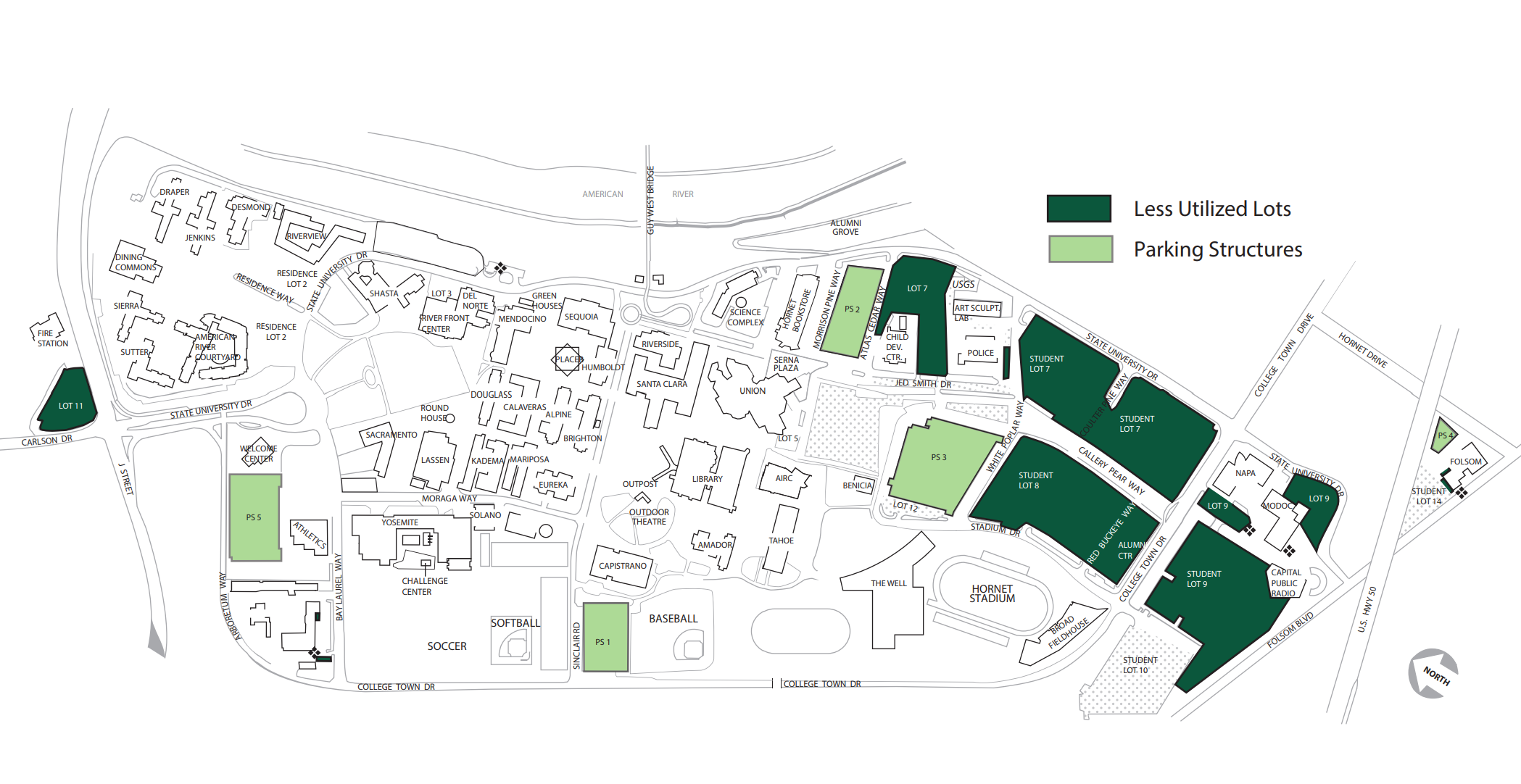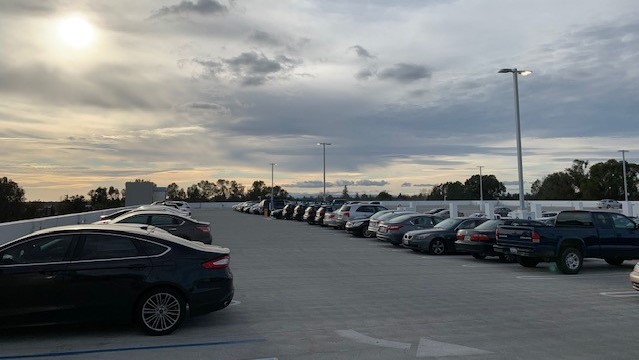 Parking lots and structures are positioned across the Sacramento State campus. Some are utilized more heavily than others, as the map indicates. Click here for a closer look. (Sacramento State map/Andrea Price)
Parking lots and structures are positioned across the Sacramento State campus. Some are utilized more heavily than others, as the map indicates. Click here for a closer look. (Sacramento State map/Andrea Price)
By Dixie Reid
After the city instituted two-hour parking limits along Elvas Avenue last fall, Sacramento State students who had been taking advantage of free, daylong parking outside the Hornet Tunnel were scrambling to find spots elsewhere.
They did not need to look far, considering the availability of plentiful parking on campus.
The issue returned to the spotlight when the city implemented its one-year Merchant Parking Permit pilot program along parts of Elvas Avenue in November 2019 after business owners complained that their customers weren’t able to park nearby.
The University was ready.
 Officials say parking can be found every day on campus, though some lots fill more quickly than others. (Sacramento State/Brian Blomster)
Officials say parking can be found every day on campus, though some lots fill more quickly than others. (Sacramento State/Brian Blomster)“We don’t have a parking availability problem anymore. We just don’t,” said Tony Lucas, associate vice president for Sac State’s Business and Administrative Services, which includes University Transportation & Parking Services (UTAPS).
Lucas agrees that Sac State once had to work around inadequate parking, but he said conditions changed. Construction of Parking Structure 5, which opened in late spring 2018, provided the breathing room that makes parking off campus unnecessary.
“On any given day, there are 500 to 600 unused student spaces on campus, and I’m talking about the lots that are almost completely empty,” Lucas said, noting that the issue no longer is about availability.
“We’ve had a problem with convenience," Lucas said. "People will circle lots that are full, waiting for someone to leave. And the parking structures fill up before lots do.”
Also, some students prefer to seek off-campus parking rather than pay for student parking permits, currently costing $178 per semester and $116 for summer session.
The University provides 13,812 parking spaces for students, faculty, and staff in five structures and 11 lots. The 10,813 student-designated spaces include 1,013 for the residence halls. The balance of the spaces are specified for employees (1,912), disabled (226), electric vehicles (116), carpool (320), motorcycles (230), and a handful spots for loading and other uses.
These lots regularly have parking spaces that go unused. Lucas said:
- Lot 11, at J Street and Carlson Drive, with 130 mostly unused student spaces.
- Lot 9, near Modoc Hall and the new Ramona Avenue cut-through to the south end of campus, which offers 653 student spots.
- Lots 7 and 8, on either side of Callery Pear Way near College Town Drive, providing 1,988 spaces and is rarely full.
The University is limited in how much parking it can provide, based on its Master Plan 2015.
“The parking we have is all that the community around us allows us to build,” Lucas said. “On the busiest school days, usually the first two weeks of the semester, the congestion is on the roadways getting into campus, not on the campus. That tells you that 13,000-plus spaces are probably enough.”
Another factor is Sacramento State's efforts to create more on-campus housing, reducing the need for as many students to commute to campus.
The August 2017 opening of Riverview Hall, which houses 416 first- and second-year students, and the addition of Hornet Commons, set to open in 2021 and house 1,100 upper-level students, are a part of the University's push to relinquish its perceived “commuter campus” identity.
